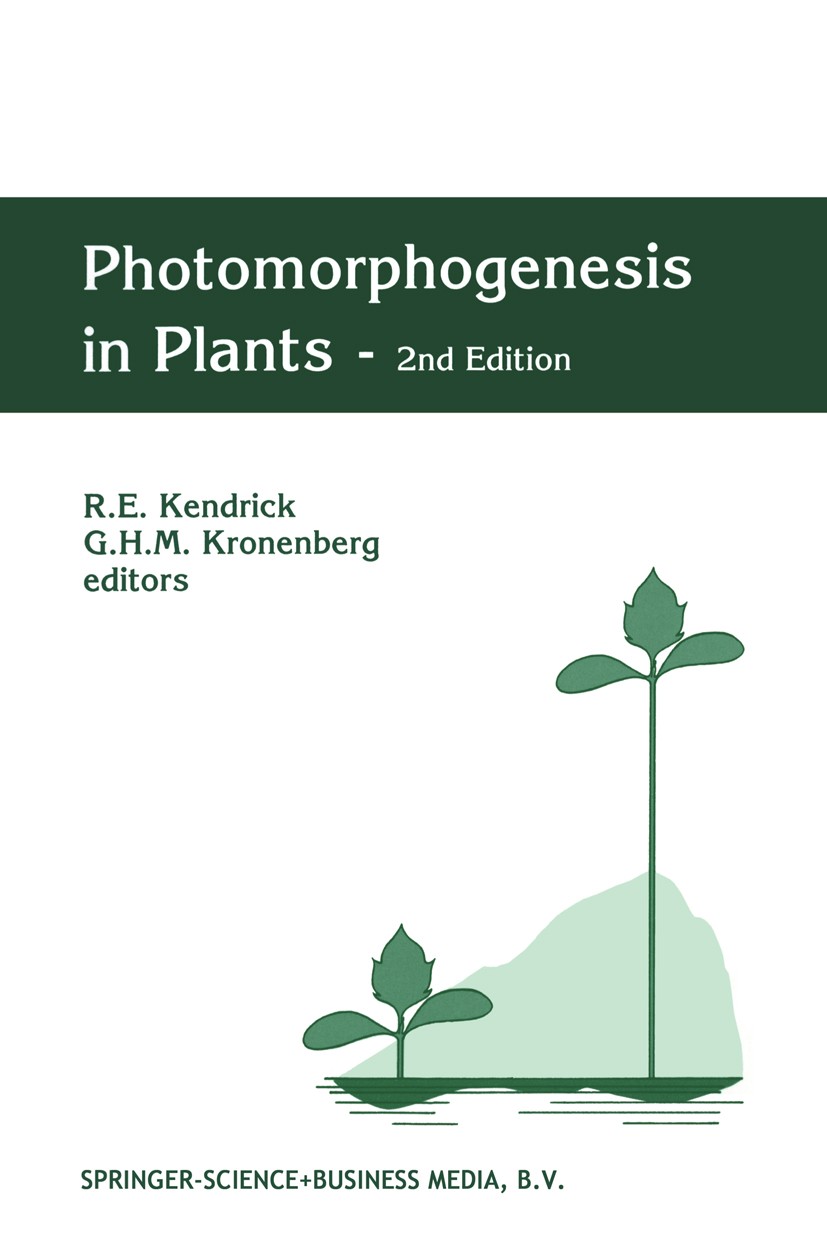| 书目名称 | Photomorphogenesis in Plants | | 编辑 | R. E. Kendrick,G. H. M. Kronenberg | | 视频video | http://file.papertrans.cn/747/746554/746554.mp4 | | 图书封面 |  | | 描述 | It is perhaps not surprising that plants have evolved amechanism to sense the light environment about them and to modifygrowth for optimal use of the available `life-giving‘ light. Greenplants, and ultimately all forms of life, depend on the energy ofsunlight fixed during . photosynthesis.. Unlike animals that usebehaviour to find food, sedentary plants use physiology to optimizetheir growth and development for light absorption. By appreciating the.quality,. .quantity, direction. and . duration. of light,plants can control such complex processes as .germination, growth.and.flowering.. To perceive the light environment severalreceptor pigments have evolved, including the red/far-red reversible.phytochrome. and the .b.lue/UV-absorbing photoreceptors.(Part 1). The quantification of light (Part 2) and importance ofinstrumentation for photomorphogenesis research are introduced in Part3. Isolation and characterization of phytochrome is a classic exampleof how photobiological techniques can predict the nature of an unknownphotoreceptor. Current knowledge of the phytochrome photoreceptorfamily is given in Part 4 and that of blue/UV receptors in Part 5.Part 6 deals with the coaction of phot | | 出版日期 | Book 19942nd edition | | 关键词 | Expression; Phytochrome; biology; development; fungi; gene expression; growth; molecular biology; photobiolo | | 版次 | 2 | | doi | https://doi.org/10.1007/978-94-011-1884-2 | | isbn_ebook | 978-94-011-1884-2 | | copyright | Kluwer Academic Publishers 1994 |
The information of publication is updating

|
|
 |Archiver|手机版|小黑屋|
派博传思国际
( 京公网安备110108008328)
GMT+8, 2025-11-23 06:11
|Archiver|手机版|小黑屋|
派博传思国际
( 京公网安备110108008328)
GMT+8, 2025-11-23 06:11


